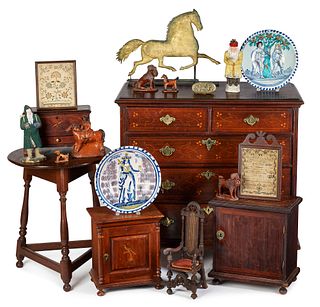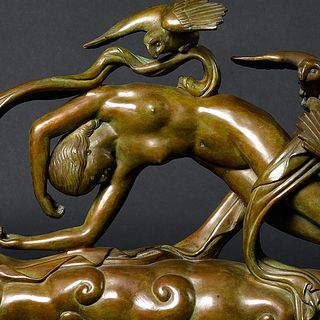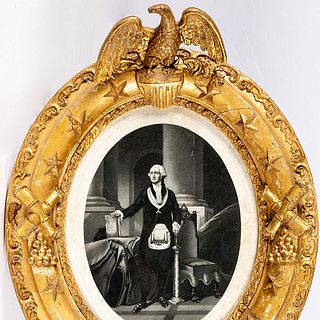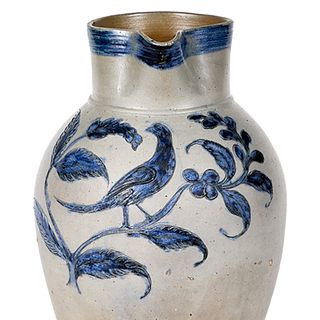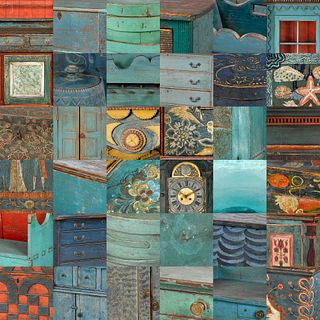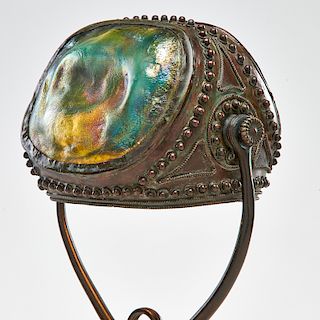Cincinnati Art-Carved Furniture
When a style of unique furniture and accessories came into fashion in the Victorian era, it took the name of the city where it originated. "Cincinnati art-carved" encompassed a broad spectrum of decorative items, from corner cupboards to fruit plates, and from fireplace mantels to picture frames.
At the heart of the movement were a professional woodcarver, Henry Fry, and his son, William. Having migrated from England, they moved to Cincinnati in 1851, where they worked on churches and for owners of estates. Among the latter was Joseph Longworth. Between 1868 and 1872 he commissioned the Frys to carve portions of the interior of Rookwood, his country home, and that of a house he had built for his daughter, Maria Longworth, who later founded the Rookwood Pottery Company.
The work in Miss Longworths house caught the eye of her friends, who wanted to learn the art form as a pastime, much like porcelain painting was in vogue during that era. The Frys opened a carving school that eventually birthed the citys art-furniture movement.
It is believed the students at the carving school included the wife and daughter of Benn Pitman. Having immigrated to the United States in the early 1850s, eventually settling in Cincinnati, Pitman wasnt trained as a carver, but he recognized a business opportunity and offered classes at the School of Design (which later became the Art Academy of Cincinnati) in the early 1870s.
Both carving schools catered primarily to women who sought the training as a hobby. The Victorian designs produced tended to lean toward the Aesthetic Movement, with flowers and plants a common element.
The art form stepped onto a much bigger stage when hundreds of examples of the work were exhibited at the Centennial Exhibition, the 1876 Worlds Fair held in Philadelphia. Interest continued into the 20th century, but by the 1920s tastes had greatly changed.
Interest revived in the late 20th century when the Cincinnati Art Museum began acquiring pieces for its collection. Today, collectors actively seek Cincinnati art-carved furniture and accessories.
Researchers have identified approximately 1,100 carvers who took classes from the Frys and Pitman. Anything produced by those hobbyists is of interest to buyers, but works signed by the teachers generally have much stronger appeal.
The definitive book on the subject is Cincinnati Art-Carved Furniture and Interiors, edited by Jennifer L. Howe.
- Winter Landscapes, Lineage & Modern Expression
- Artist Spotlight: David Gerstein, Sculptural Pop in Bold Color & Motion
- The History of Rolex Watches: Innovation, Precision, and Enduring Prestige
- Preview the December Doyle+Design Auction: A Celebration of Modern & Contemporary Mastery
- Billings Winter Design 2025: A Celebration of Modern Mastery Across Eras
- The Ultimate Holiday Gift Guide: Luxe Finds From Bidsquare’s Finest Auctions
- Fine & Antique Jewelry Sale: A Curated Journey Through Craftsmanship & Design
- Upcoming Auction Spotlight: Doyle’s Fine Art: 19th Century & Early Modernism
- Entertain with Style This Holiday Season: Highlights from Doyle’s December 8 Auction
- Six Standout Lots from Newel’s Fine Jewelry, Timepieces & Luxury Handbags Sale



 EUR
EUR CAD
CAD AUD
AUD GBP
GBP MXN
MXN HKD
HKD CNY
CNY MYR
MYR SEK
SEK SGD
SGD CHF
CHF THB
THB

